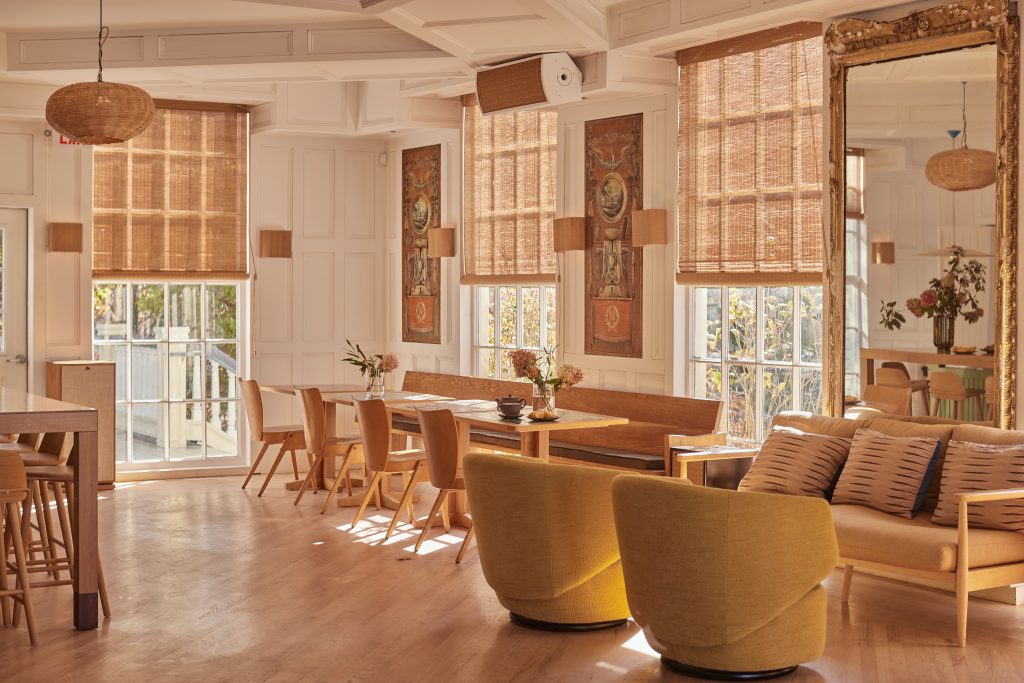A Tranquil Oasis in Quintana Roo, Habitas Bacalar
Nestled between the jungle and the lagoon, this property near the Mexico-Belize border provides a lush retreat

Bacalar—located in the southern part of Quintana Roo, not far from Mexico’s border with Belize—was founded between 415 and 435 CE by Mayan people. Its name derives from the Mayan “siyan ka’an bakjalal” meaning “place surrounded by reeds where the sky is born.” The jungle-dense, colorful and enchanting place is home to the glorious La Laguna de Los Siete Colores (Lagoon of Seven Colors) where, at any time of the day, the crystalline water might appear electric blue, turquoise, teal, emerald green or anywhere in between. The freshwater lagoon is bordered by mangroves, reeds and stramolites, and the oasis that is Habitas Bacalar provides a sublime view of it all.
 by Katie Olsen
by Katie Olsen
Understandably, tourism threatens the delicate ecosystem within the lagoon, which is populated by 3.5-billion-year-old stromatolites—giant microbialites that are the oldest life on the planet, pre-dating plants and dinosaurs. While there are preservation efforts in place for the lagoon’s famous seven colors, it’s crucial that visitors also do their part. At Habitas Bacalar, it’s simple: don’t touch the stromatolites and don’t wear sunscreen—even so-called “reef-friendly” iterations—in the lagoon. (It should go without saying, but no littering or peeing in the water either.)

Habitas makes it easy to go without sunscreen, providing plenty of umbrellas on their wooden deck as well as an undercover bar and dining space that looks out onto the sparkling water. There’s a mini pier with a step-ladder into the lagoon and nearby are stand-up paddle-boards and transparent kayaks for guests to use.
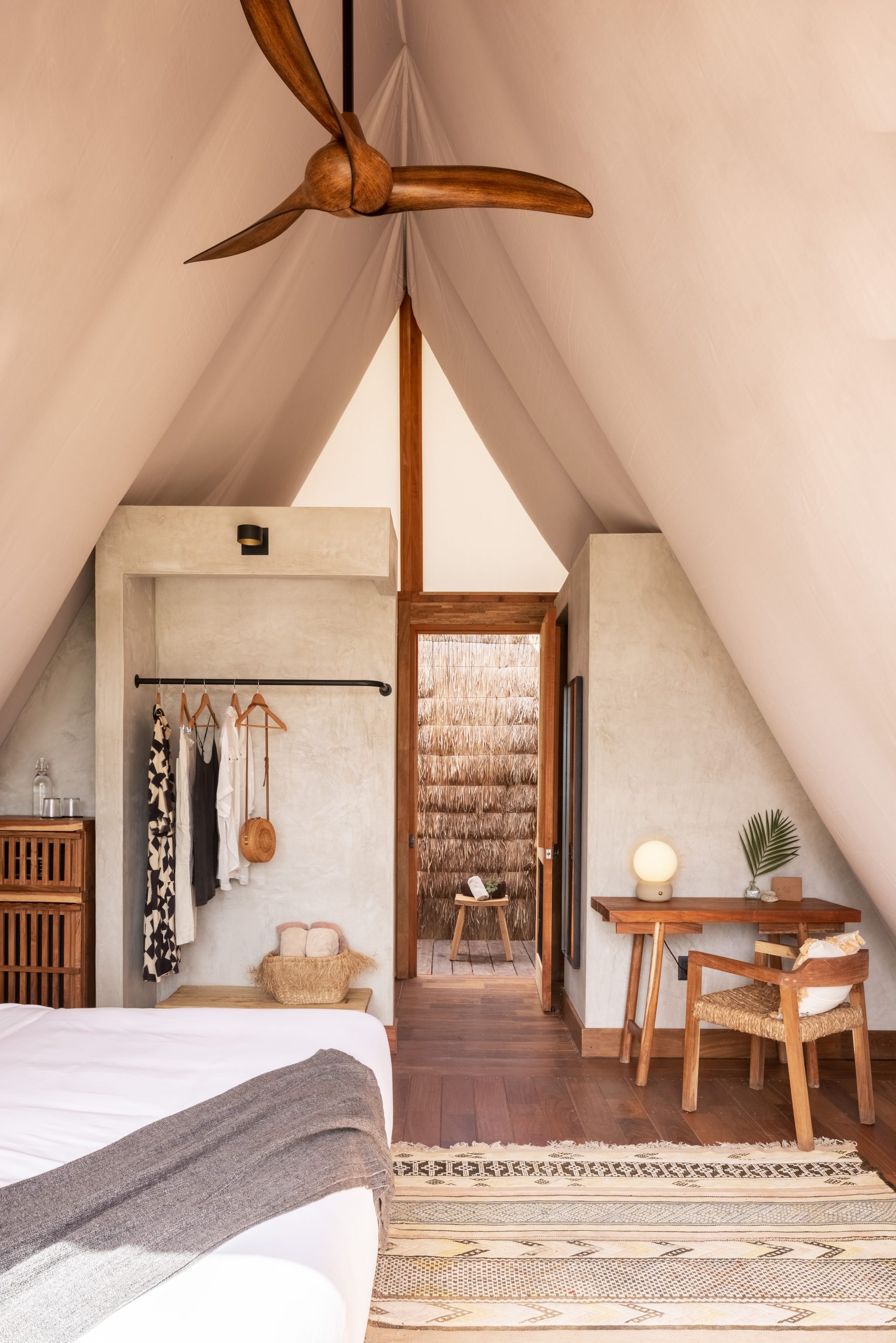
Some of the 35 guest rooms (each of which has a maximum occupancy of two) look out onto the lagoon, while others are nestled further back in the jungle. Each is a stand-alone, tent-like structure and has an outdoor shower (with all-natural products to protect the jungle and lagoon), cozy robes and a king-sized bed.
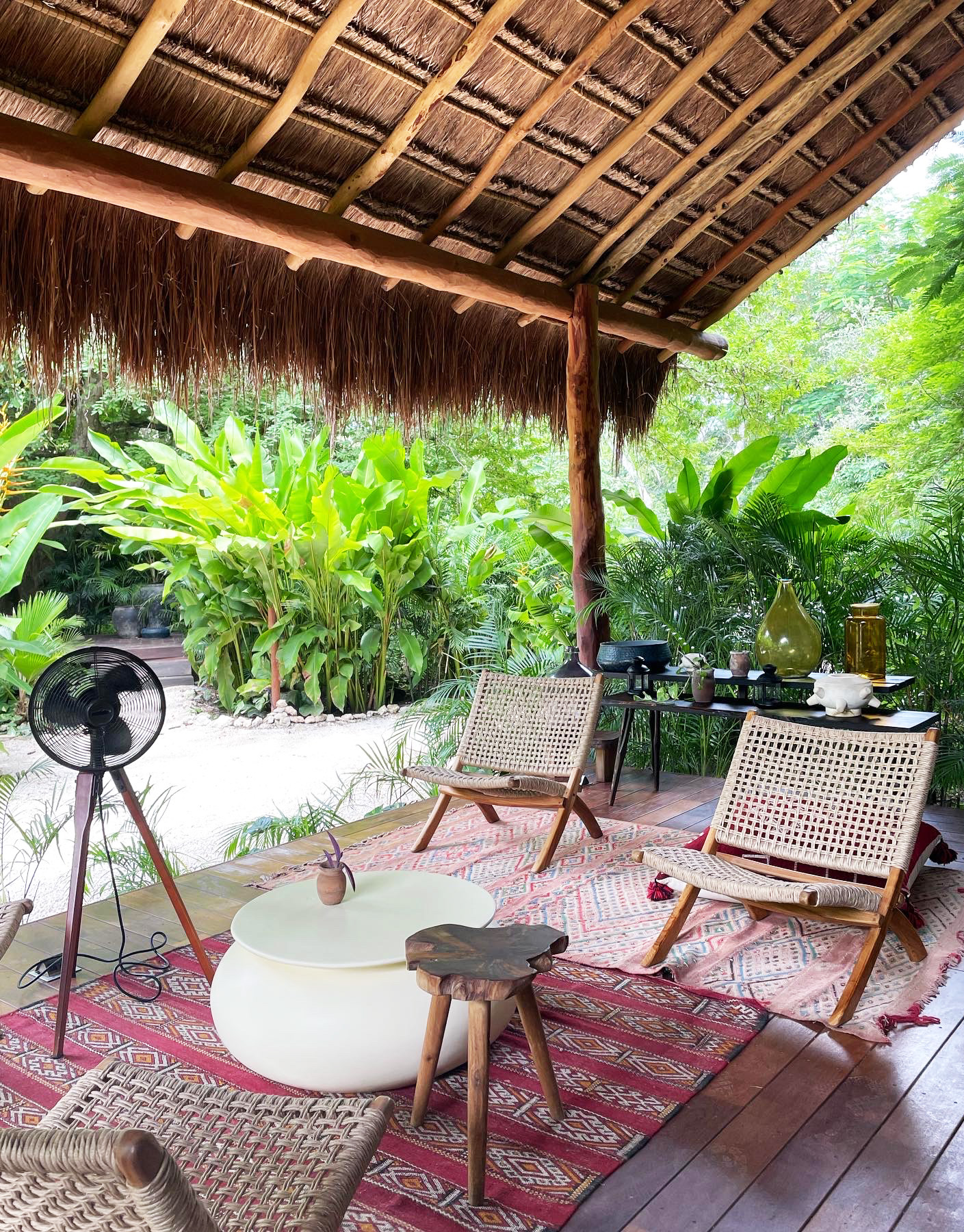
When guests arrive through a large but nondescript gate just off the highway, there’s a short drive into the leafy surrounds. At the outdoor reception area (replete with vintage fans and rugs, rattan seats, potted plants and more), guests are checked in and then take part in a traditional Mayan welcome ceremony with palo de tinte and copal resin. This ceremony—centered on creating intentions—sets the tone for the Habitas Bacalar experience.

The overall vibe is communal, but there’s no forced fun; guests can take part in various lessons from sunrise stand-up paddle-boarding to guided meditation and yoga classes, or keep to themselves. The open-air yoga shala mimics the rooms’ A-frame shape, as do the spa reception and cabins.
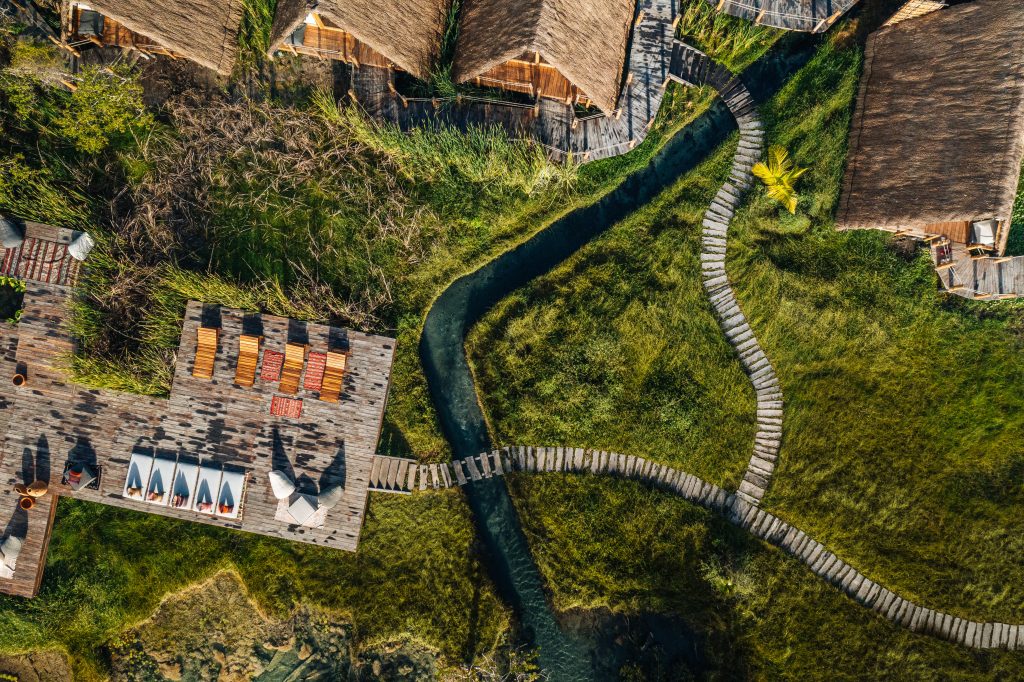
The restaurant Siete (meaning seven, named for the lagoon’s colors) is a double-story open-air space, and all the food and drinks from there are also available on the deck at the Tree Bar. While there’s plenty of focus on plant-based dishes (there are raw bowls and quinoa bowls galore), there are lots of dishes that combine all kinds of cuisine including Mexican, Mayan and beyond. From smoothies and tostada de quelites in the morning to mezcal cocktails and Yucatecan lime cake in the evening, the menu provides everything guests could want. We highly recommend the seared local long beans with ginger, peanut and tahini; the 12-hour cooked Yucatecan pork with pineapple puree, pickled onion and handmade tortillas; and the wood-fired cornbread served with peanut crumble and ice cream.
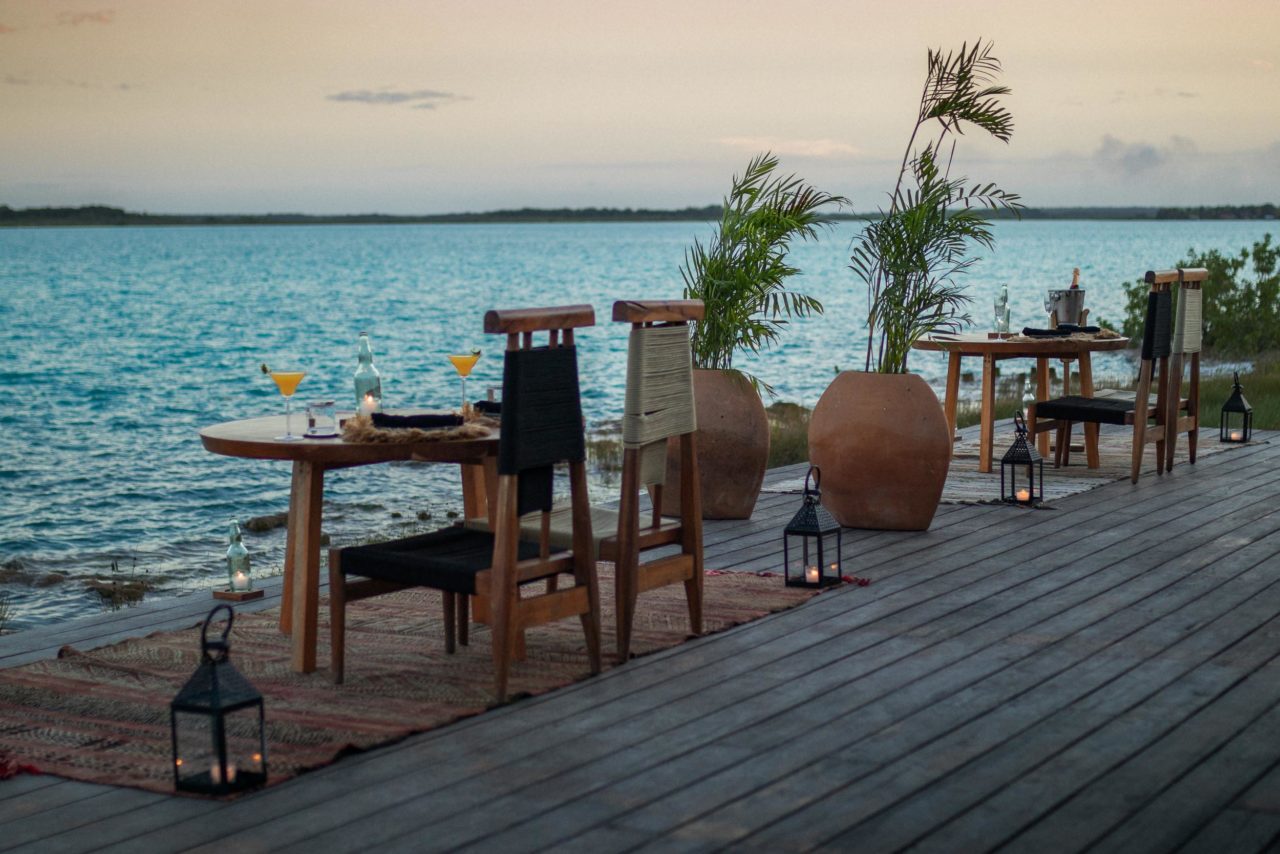
Both drinking and dining areas provide a romantic setting for a nighttime meal but on the deck, with candles flickering and copal burning (emitting small plumes of gloriously scented smoke), looking out onto the dark lagoon there’s just a hint of light pollution from Chetumal in the distance, making guests feel even further from reality.
Hero image courtesy of Tanveer Badal for Habitas Bacalar

